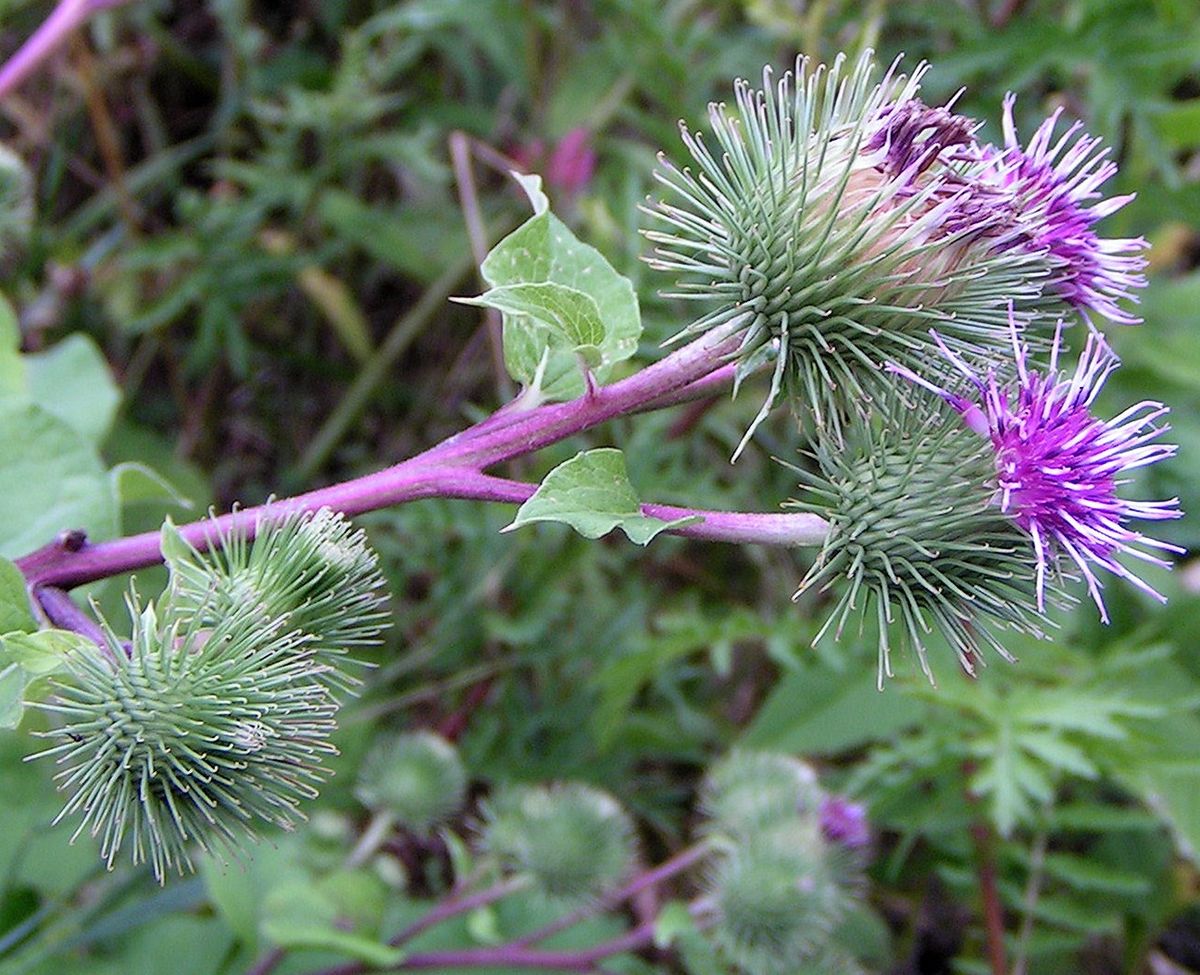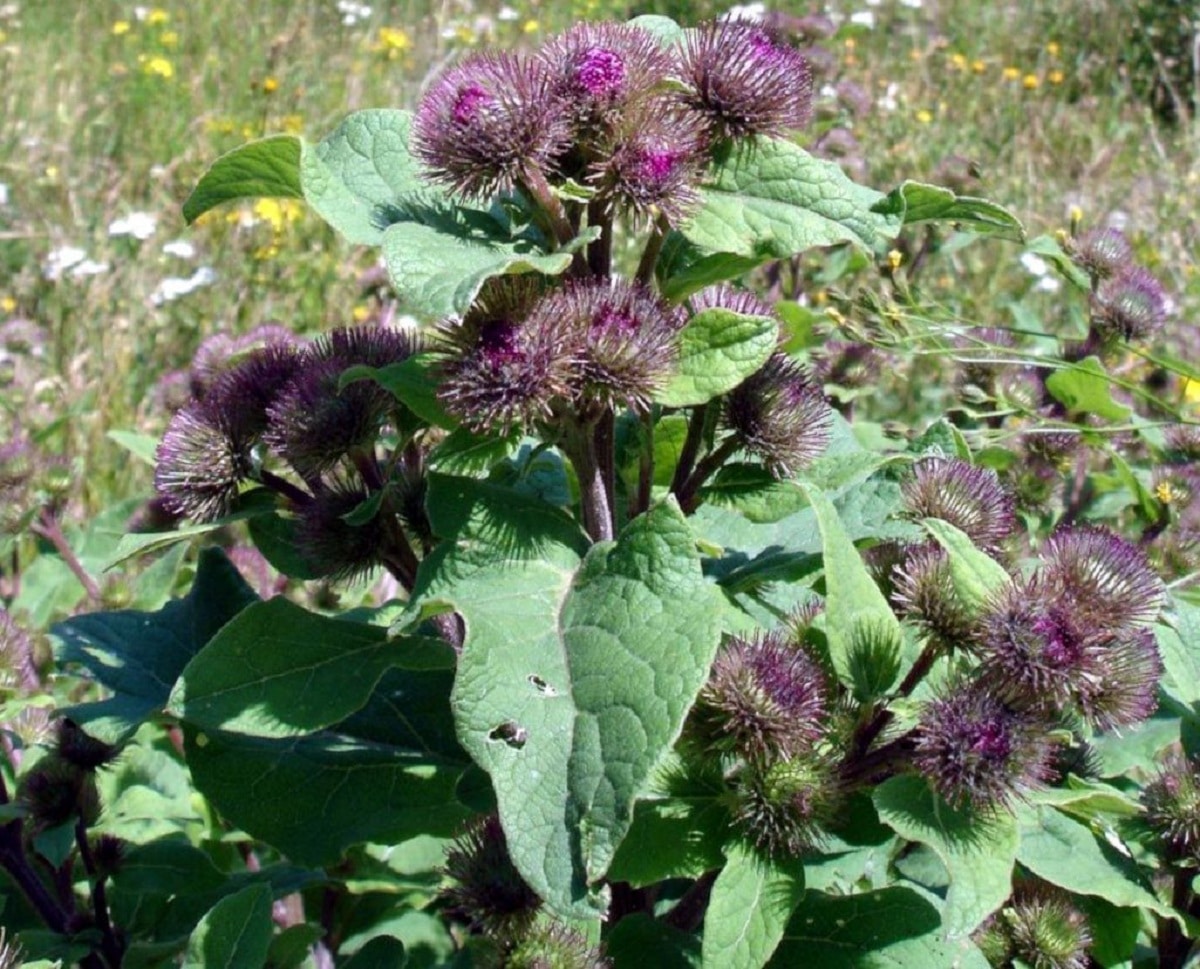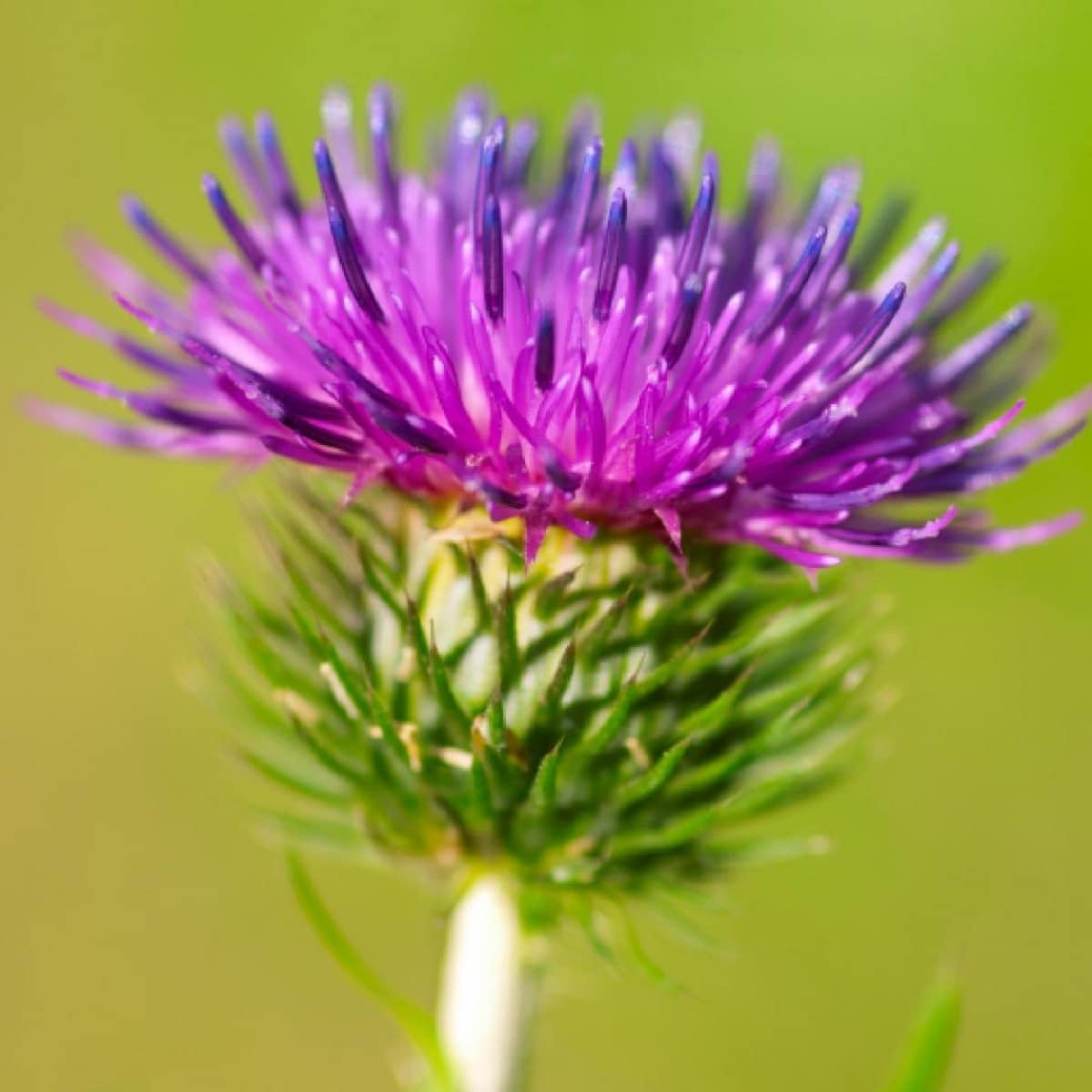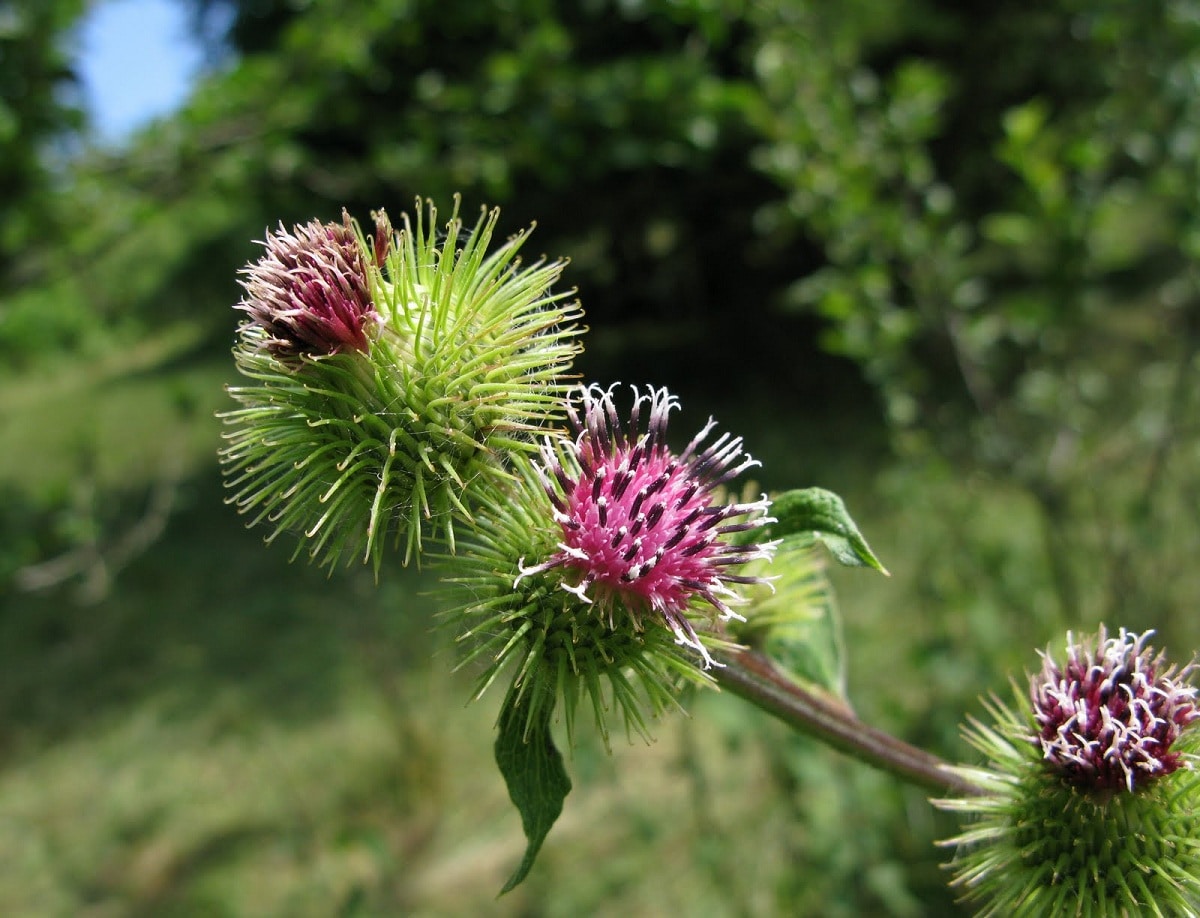
Today we are going to talk about a type of plant that has medicinal properties and comes from Europe and Asia. It's about the burdock. Its scientific name Arctium Lappa and it is considered as a cleansing remedy that helps rid the body of the existence of toxins and some heavy metals. For this reason, it has become quite famous not only for its medicinal properties, but also for its cultivation in gardens with ornamental purposes.
In this article we are going to tell you about all the characteristics, cultivation and medicinal properties of burdock.
Key features

This plant is a biennial herbaceous plant that is usually about a meter high at most. It belongs to the Asteraceae family and it has nutrients and medicinal properties. This is the reason why it is widely cultivated worldwide, there are regions where it usually grows spontaneously and is exploited for its medicinal uses. They usually grow naturally in wasteland areas and require a considerable amount of nitrogen.
Its leaves are green, wrinkled, alternate and have a large size compared to the rest of the plant. It is oval in shape and its extremities are rounded. Distinctively from other species of this family, it has the lower part of the leaves of a white color and covered with fluff. Its flowers are purple or red and congregate in corymbs.
As for the fruit, the burdock has a ball with hooks that the animals are reaching and have their distribution thanks to them. That is, the animals are responsible for being vectors of transmission of the seeds so that the burdock can increase its area of distribution. These fruits grow in the upper part of the plant and inside they have the necessary seeds for reproduction.
During the first year of life, this plant grows flush with the ground in a rosette shape. When the first year has passed, the fruits and flowers begin and need to be held since the stem can reach two meters.
Origin and cultivation of burdock

This plant is native to Asia and Europe and has been distributed throughout America thanks to its medicinal properties. They tend to proliferate in vacant soils that do not have too many nutrients as well as in dumps, roadsides and some vicinity of inhabited areas.
It is also known by other common names throughout history that are summarized in the following: antelon, agarrocha, agarrucha, arrancamoños, cachorrera, cachurro, cadillo, carbano, cardinches, toad leaf, burdock leaf, greater limpet, glob, peyizos, respigón, sarapico, curlew and zarrapotillo
As for cultivation, they need well-fertilized and worked land so that they can grow in good conditions. If we use wild plants, we must take care so that there is no pollutant, car traffic or animal waste in nearby places. The most widely used property of this plant takes advantage of the leaves and roots. The stems are not usually used since the most bitter principles are concentrated.
During the collection of burdock it is advisable to take the roots of plants that are already more or less one year old. The best time to do this is when they have not yet started their first flowering period. Flowering usually takes place between the months of July to September. If we want to store the burdock, we must clean everything very well and the cut of the bush must be completely longitudinal. It is advisable to dry it in the sun, as long as the temperature does not exceed 35 degrees. Once it is finished drying, take it to a pot and immerse it in boiling water. In this way, it manages to preserve as many active substances as possible.
Medicinal properties of burdock

This plant is used for numerous treatments and pathologies. Mainly It is used to alleviate dermatological problems, arthritis and some infections. In Europe, the most useful parts of the plant have been used in a traditional way. And it is that the roots and leaves concentrate the greatest amount of the active principles that are those that have the medicinal properties. Chinese medicine includes burdock in some common cold treatments.
We see that the main components of this plant are the following:
- Leaf and root components: here are active principles such as tannins, volatile oils, polyacetylenes, antibiotics, resin, mucilapho, inulin, alkaloids and sesquiterpenes and bitter glycosodiums.
- Seeds: If we extract the seeds from the fruits, they have some properties such as essential fatty oils and vitamins A and B12.
Among the main uses of this plant are given in a variety of ways depending on the part of the plant that is used. Let's see what the main uses are:
- Root: the root has some properties that serve to clean, as a mild laxative, due to its diuretic, diaphoretic, antierreumatic, antiseptic and antibiotic properties.
- Sheets: the leaves only have a mild laxative effect and diuretic properties.
- Seeds: It is used to treat fever, it is anti-inflammatory, antibacterial and hypoglycemic.
How to use
Let's see now how we should use this plant in case we want some treatment:
- Root decoction: the first thing we must take the root and put it to the Decoction. From there we have between half a cup and a cup and we will take 3 times a day for skin problems. It is essential to take them for those skin conditions such as persistent boils, rashes and dry eczema.
- Infusions: an infusion is made with the leaves and it is advisable to drink a glass before meals.
- Decoction of the seeds- A cup for colds and infections that often cause fever, sore throat, and cough. It is advisable to mix it with honeysuckle flowers or some forsythia berries.
- Tincture: You can take about 5-10 ml 3 times a day of root tincture to be able to detoxify the system of arthritic ailments, stones, kidney grits or simply to stimulate digestion.
I hope that with this information you can learn more about burdock and its medicinal properties.